Introduction
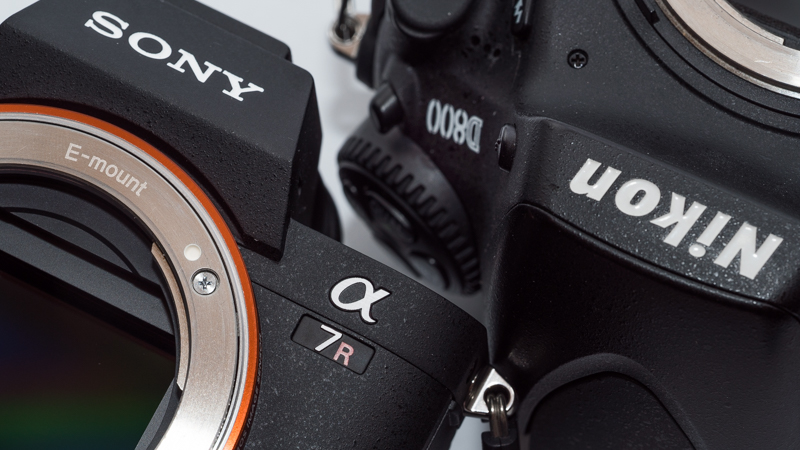
As many of you may have noticed when reading my reviews I am a former Nikon DSLR-user. In the past I had a D40, D5000, D300, D700 and still have a D800 (which is also for sale right now).
I was never unhappy with the results I got from these cameras and I think the Nikon engineers are the best at getting the most out of the Sony sensors. Still I ended up selling most of my Nikon gear. In case you are interested to find out more about this story be welcome to read on!
My first mirrorless camera
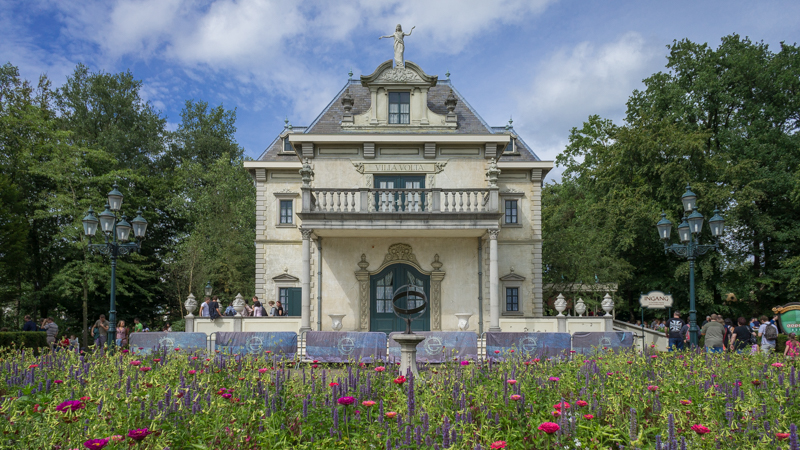
When the Nex APS-C series was announced with a 16mm 2.8 kit lens I was quite amazed. APS-C sensor, small body, small and fast wide angle lens, decently priced. I was still shooting with a D300 these days and the Nex-3 including the 16mm 2.8 was cheaper than a 16mm 2.8 lens for the D300. And smaller and lighter. Huh.
So I ended up buying a Nex-3 with the 16mm 2.8 at a discount.
I liked the size of the package, but the handling of the camera was very clunky (unbelievably slow, loudest shutter I have ever heard, button concept very compactish), the hot shoe was more of a bad joke and the lens wasn’t exactly hot either. I tried some adapted lenses and also bought a Sigma 19mm 2.8, but ended up selling the camera because I felt to limited in terms of handling, image quality and lens choice.
The A7 series

Things got more interesting with the announcement of the A7 and A7r. The full frame sensor in a small body was very interesting, as it allowed many lenses to be used the way they are meant to be used. I was still rather skeptical and followed the online discussions: bad battery life, sloppy mount, still clunky in operation. But with the prices falling and because I was desperate to try out the 50mm 0.95 Mitakon I bought an A7 with the 28-70mm kit lens and the 50mm 0.95.
The kit lens was already sold after one afternoon as it felt very cheap and I still hated the fly-by-wire focus (I knew that from the 16mm 2.8 already…) and the autofocus handling sucked (it still does, Sony!).
With the 50mm 0.95 Mitakon things looked very different. Manual focus even with that shallow depth of field worked flawlessly in comparison to my D800 (where I put in an S-Type focusing screen) with the old 50mm 1.2 AI-s. That was interesting.

I knew many lenses could be adapted and I was always interested in the Voigtlander 12mm 5.6 Ultra Wide Heliar so I bought one on the used market (wasn’t easy because I wanted the filter-adapter, too).
I was hooked. As someone who was used to carry around lenses like the 14-24mm 2.8G this small gem was a relief!
Well, there have been some issues with the first gen A7…

The more I used the A7 the more I liked the idea of using mainly small Leica-M lenses. I ended up using the Voigtländer 12mm 5.6 UWH M39, the Voigtländer 28mm 2.0 Ultron, the Voigtländer Nokton 50mm 1.5 and the Leica Summicron-M 90mm 2.0 pre-Asph.
Unfortunately there have been some issues, especially regarding the sensor reflections. For me the camera was not really usable for nightly city scapes (which I love to do). I was then deciding between getting an A7II or an A7s. As I also love to do landscape astrophotography (see my flickr album) and Leica-M lenses seemed to work best on the 12mp sensor I thought the A7s would be more appropriate (I tested both in store and the reflection issues are pretty much resolved on both cameras). I also thought: “Hey, you still have a D800 with 36mp as your main camera”, so 12mp didn’t bother me at all (they still don’t actually). Luckily I found a good deal on Amazon warehousedeals so I ordered one.
Venice with the A7s

I grew confident enough with the A7s to take it as the only camera to a trip to Venice. The camera plus the 4 lenses fitted perfectly in the belt pocket of my Mind Shift Gear Rotation 180 Panorama* backpack and in the upper compartment was still some space left for a Nikon AF-S 20mm 1.8G with metabones adapter, a Hitech 67mm filter system and also a daypack. I was very happy with the results, as I always had the right focal length easily available. There were also no “which lens to leave at the hotel because the bag is to heavy” questions I had to ask myself. I liked that.
The secondary camera becoming the primary camera
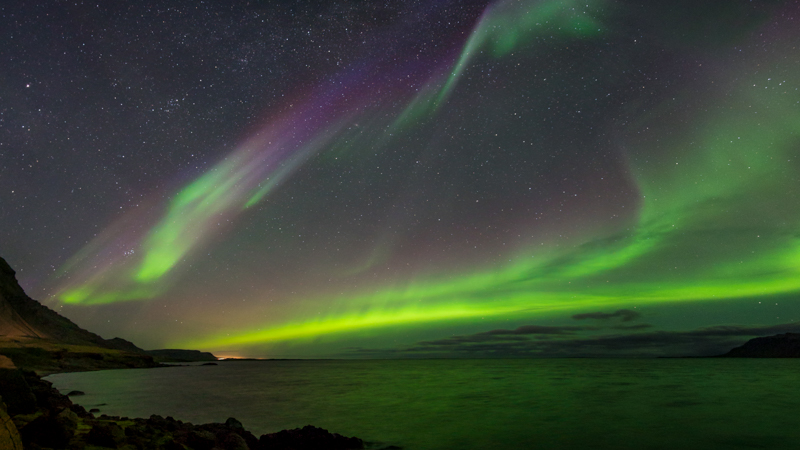
A trip to Iceland in 2015 was the last trip I also carried the D800 with me. Traveling with a pro DSLR and pro lenses has become quite annoying nowadays. Tests for explosive substances at the airport, fiddling out all lenses separately for x-ray and the size and weight restrictions for carry on baggage which seem to become worse every day.
From there on I only carried the A7s. Prague, Paris, Scotland, Tenerife, Austria, Italy and it never let me down.
There were some additional benefits: with the absence of a flipping mirror and the implementation of an electronic first curtain shutter I can also use lighter tripods now. I even got a Velbon UT 43D II* tripod which fits in a shoulder bag or backpack. This is a tripod which I would never put a DSLR on, but which works really ok with mirrorless cameras (and focal lenghts <=90mm) for city trips (for everything else I am still using a series 2 Gitzo).
The situation with native lenses
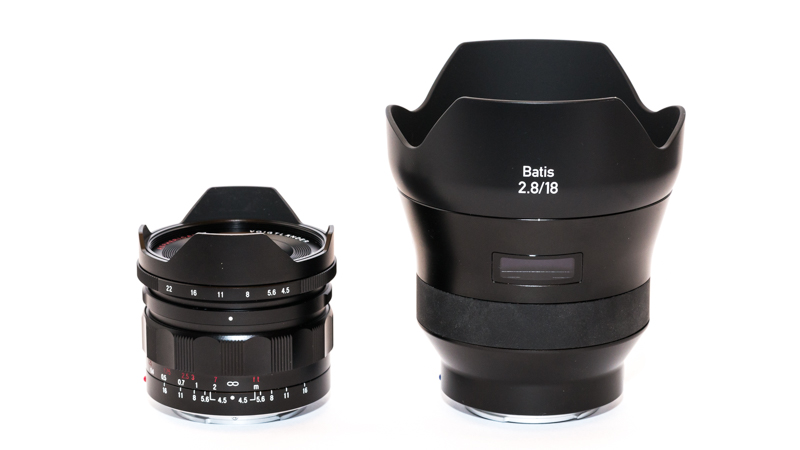
I still don’t own a single FE lens made by Sony. I also don’t see that changing anytime soon. The non linear coupling of the fly-by-wire focusing unit to the focus ring is something I can hardly get by with. Add to this many of them are as big and/or heavy as DSLR lenses and the main benefit of the whole system (for me) simply vanishes. Don’t get me wrong, I totally understand Sony had to make these lenses as they also want to attract some Pro’s shooting fashion and stuff like that, where size and weight isn’t really an issue at all.
Luckily there are two manufacturers that are now producing exactly the lenses I am interested in: Zeiss and Voigtländer. Let me put it like this: the Zeiss Loxia lenses and the new Voigtländer E-mount lenses are following the Leica spirit: small lenses, great build quality, manual controls, great optics (and pricey, but fortunately not as much as the Leica lenses).
Nikon sell out
When looking in my camera closet I didn’t want to carry the heavy professional Nikon lenses anymore. I also grew attracted to using an EVF, as it made checking the shots afterwards unnecessary in most cases. So I decided to sell most of my Nikon gear – I am still undecided whether to keep or sell the 200mm 2.0 though – and bought an A7rII instead. I also wanted to have the best lenses possible for my personal needs.
My personal needs are: small and lightweight lenses, nice sunstars, high (micro-)contrast, stopped down great across the frame performance, decent flare resistance and compatibility with a 67mm filter system.
My Nikon kit was:
Nikon D800
Nikon AF-S 14-24mm 2.8G
Nikon AF-S 20mm 1.8G
Sigma 50mm 1.4 HSM Art
Nikon AF-S 85mm 1.4G
Sigma 150mm 2.8 HSM Macro
Nikon AF-S 200mm 2.0G VRI
My Sony kit is now:
Sony A7rII + A7s
Voigtländer 10mm 5.6 Hyper Wide Heliar E
(Samyang 14mm 2.8 (may be replaced by Laowa 12mm 2.8 or Irix 15mm 2.4))
Zeiss Loxia 21mm 2.8
Zeiss Loxia 35mm 2.0
Leica Summicron-M 90mm 2.0 pre-Asph
(Sigma 150mm 2.8 HSM Macro)
I will also keep the Voigtländer 12mm 5.6 Ultra Wide Heliar M39, and the 50mm 1.5 Nokton for now.
Why DSLRs still matter
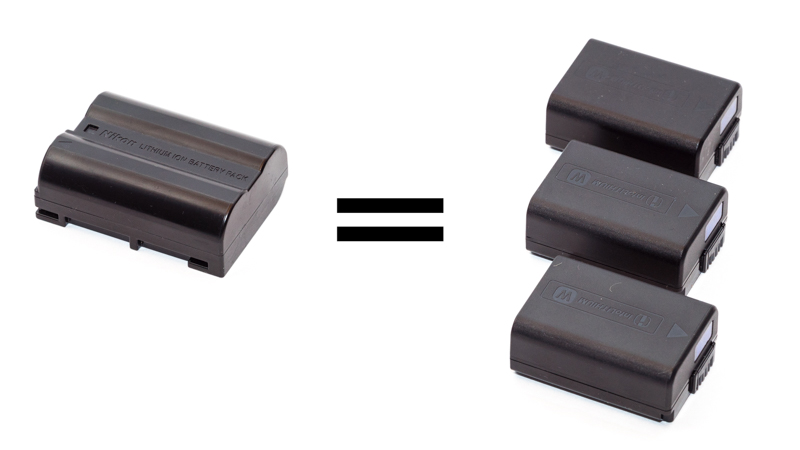
With big and heavy lenses I have problems seeing a benefit in using smaller mirrorless bodies and I think the AF systems of cameras like the D5/D500 and the corresponding Canon models are unrivalled (yet).
The A7 cameras also still have some firmware issues that could easily be resolved with a firmware update (but probably won’t): Auto ISO should be able to take the focal length into account (with focal lenghts <50mm), moving the focus area should be possible without pressing a button first and while it was a long way getting uncompressed Raw files, lossless compressed would be even better.
Oh, and the battery life, in my shooting one Nikon battery equals at least three Sony batteries, one should also take that into account when comparing the weight of the cameras.
The future
I really hope some (other) manufacturers start making use of the narrower flange distance. I would love to see a Tilt/Shift lens wider than the Canon TS-E 17mm 3.5 and a very wide yet very fast wideangle lens (wider than 14mm, faster than f/2.8). Samyang with their APS-C lenses (12mm 2.0 and 21mm 1.4) has shown what is possible here.
I think there are enough 35, 50 and 85mm lenses to choose from, I would like to see boundaries being shifted and to end this article I want to cherish Voigtländer for being the first to do so with their 10mm lens 🙂
*affiliate links
Further Reading
- Manual lenses on A7 camreas – a beginner’s guide
- Filters for digital photography
- Mindshift Gear Rotation 180 Horizon
Support Us
Did you find this article useful or just liked reading it? Treat us to a coffee!
![]()
![]()
![]() via Paypal
via Paypal
This site contains affiliate links. If you make a purchase using any of the links marked as affiliate links, I may receive a small commission at no additional cost to you. This helps support the creation of future content.
Latest posts by BastianK (see all)
- Review: Nikon 50mm 1.8 Series E - November 12, 2025
- Review: Nikon AF-S 28mm 1.4 E - November 5, 2025
- Review: Sigma 135mm 1.4 Art DG – The actual Bokeh Master - October 25, 2025
Hey you ended up keeping the Loxia 35! I seem to remember your review being rather unimpressed with it. I’m considering buying one so I’m curious why it’s in your kit now.
Dear Ted,
with my reviews I try to be as objective as possible. Sometimes this might just not work but I still try 🙂
With the Loxia 35, from an objective point of view, there are some downsides: coma, field curvature, bokeh at certain distances and maybe even more.
But my personal experience is, that I kept coming back to the photos I took with the review sample and I really liked the rendering of them. Stopped down a bit there is very high clarity and contrast favourable for my usual subjects.
So as I actually missed the lens, I decided to buy one.
I had already updated the review a few days ago:
http://phillipreeve.net/blog/review-zeiss-loxia-35mm-2-0/
Bastian
I told you time ago when you reviewed the Loxia 35 that it is the best choice 35mm for the A7.
same goes with the 50. They are not perfectly corrected optically but they are photographically which is more important.
The 55 1.8 for example is fantastic optically speaking,but photographically it is cold,with a slight haze and some magenta color that is pretty difficult to take away. If you compare the color and rendering of the Loxia 50 to the 55 you can clearly see a big difference. Loxia seems ‘alive’ while the 55 looks somehow sterile.
I do actually feel reviews are some times too little about photographic quality as a whole and too much about gear mania..
What we need is to improve the way we see and not how wonderful are the details of a mediocre picture.
😉
Best regards
Nicola
Regarding the 55mm 1.8: I can see what you mean, I have very little interest in that lens at all.
As for the Loxia 35 being the best 35mm for E-Mount: for my personal needs, right now, yes. But it still comes with a lot of compromises and 1 or 2 of them I would have definetly liked to avoid.
If there ever is to appear an updated 35mm 1.4 ZM or someone takes the 35mm 2.0 Sonnar out of RX1(R/II), adds a 10-bladed diaphragm and makes it an E-mount lens I will switch in a heartbeat 🙂
Bastian
Hi, Bastian. I am suggesting that the ‘sleeper’ 35mm lens for full frame (and for you and me, in particular) may be the *compact*, smoothly manual focusing HD DA Pentax 35mm f.2.8 macro Limited. I have not been able to test this ‘crop sensor’ lens on a Sony A7 series body directly (my A7 is effectively gone and up for sale in anticipation of acquiring the new Pentax K-1 sometime a little down the road); but this design — along with its co-developed twin iteration, the Tokina AT-X Pro 35mm f.2.8 macro — has long had a reputation for working pretty well full frame, stopped down a little (principally on film, in the case of the HD DA Limited, for fairly obvious reasons). The Tokina version, larger and with somewhat less sophisticated coatings, should work normally on any Nikon or Canon full frame body and reveal exactly what limitations to expect in a FF application. A Nikon body using a Sony sensor would, I’d assume, be the preferred choice between the two for such a test.
There is not a lot of information on the internet about this alternative option, but I have seen shots taken with 35mm film that looked very promising. The thread at Pentax Forums with user reports on their experiences using the DA lenses full frame currently suggests that a very modest crop factor of 1.15x will largely take care of most concerns using the 35mm macro Limited at wider apertures. From what I have gleaned from researching this online, I am provisionally making this call on the matter for myself with that anticipated K-1 (and our principle photographic interests are very similar, Bastian) –> Very nicely usable at f.4.0 with the 1.15x crop (no real issue at all for a 36 or 42.5mp sensor)… and essentially fine full frame from f.5.6. I have added to my existing SMC DA 40mm f.2.4 Limited ‘pancake’ lens the featherweight 4+ ounce Pentax SMC DA 35mm f.2.4 to supplement the range from f.2.4 to, say, f.4.5 with snappy (but loud) autofocus — either way, a very totable and still compact two lens solution for this focal length!
The inexpensive DA 35mm f.2.4, though designated ‘DA’, is actually full frame by design (a derivation from the older FA 35mm f.2.0 film era design, circa 1999); and manual focus operation is very, very good for an AF lens, with a longer throw on the focusing ring than you’d expect. And like a much more expensive lens, aberrations are well controlled on this “plastic fantastic” (several Imatests can be found online). The DA 40mm Limited is good to go, FF, from about f.4.0, BTW.
In summary, I have chosen to give this approach a first shot in preference to acquiring the heavyweight Zeiss 35mm f.2.0 ZK (about 17 ounces) to go with my Zeiss 25mm f.2.8 ZS (large) / Olympus OM Zuiko 24mm f.2.8 (small) complementary pair of primes. There is nothing else I can think of to better provide the famously desireable Zeiss-like rendering virtues in a more compact form. Note this: The 35mm macro is known for being very sharp right across the frame (at least on APS-C) from f.2.8 — In fact, Techradar ran a large group test of mostly fast 50mm ‘normal lenses’ and included the Tokina AT-X Pro version of the 35mm… and the latter comfortably led the entire field in sharpness at f.2.8 versus both AF-S G Nikkors, et.al. Look it up. Thus, in my book, the HD DA Pentax Limited is still a fast lens for an IQ-centric photographer. You’d want to stop either of those Nikkors down to f.2.8 anyway, when you can, for noticeable better overall image quality, wouldn’t you?
The 35mm macro Limited also has the virtue for landscape photographers of retaining sharpness at f.16. We don’t expect that from some price-y f.1.4 behemoth.
And it yields true 1:1 macro with the expected flat field and ultra low distortion, as well. The review at SLRgear.com seems on point, as a starting reference.
In my case, I am also now employing an APS-C complementary tandem of the Sony A5000 with Elvid 3x LCD viewfinder hood in preference to the ubiquitous A6000, near base ISO, for overall image quality reasons… along with the 24.2mp Canon M3 with EVF (and its uniquely accomplished EF-M 11-22mm IS STM and 22mm f.2.0 STM ultralight premium lenses — 7.6 ounces and 3.7 ounces, respectively!). I don’t think I need a crop sensor DSLR any more. The small, ‘jewel-like’ Pentax Limiteds are ideal for crop sensor mirrorless, too: the HD DA 35mm gives me a 56mm equivalent ‘long normal’ on the circa 12-1/2 ounce M3, a perfect and practical FL step from my preferred ~35mm ‘wide-normal’ mainstays. The Pentax HD DA 70mm f.2.4 Limited is also useable FF from f.3.5-4.0, Sony A7 fans. And don’t miss considering the 12+ ounce SMC FA 100mm f.2.8 Water Resist macro, too; another uniquely compact premium DSLR lens example from Pentax. Apart from being unaware of the FF potential of numerous Pentax DA series lenses, I don’t know why more Sony mirrorless users have not picked up on these wonderful alternatives for manual focusing on their cameras — unlike so many SONY lenses, the physical scale factor is right!
If you can get hold of the original SMC DA version of the Limited macro to try out, you’ll have the same optical formula with the very slightly warmer rendering, older SMC lens coatings; and straight-sided rather than the revised rounded aperture blades. I really think this is going to work out great.
CORRECTION: Trying that Tokina AT-X macro on Canon probably won’t work, if the normal EF-S (crop sensor) lens ‘lockout’ “feature” on Canon FF bodies is part of the Tokina-for-Canon design. Sorry — I’ve never owned a Canon DSLR.
Regarding the pingback below: I understand that point ENTIRELY. I have never considered owning a Canon DSLR; nor do I have any plans to do so in the foreseeable future.
The point I find SO hard to get across to folks with firmly held biases is that the Canon EOS-M system is substantially and essentially a thing in itself! EOS-M has exactly the same 18mm flange back distance as the Sony E/FE mount. The SAME kinds of adapters as are there for Sony mirrorless cameras are there for the M system. The difference is: The newish 24.2mp sensor plus Digic 6 processor on the Canon — essentially = T6s and NOT inferior at all in **IQ** to the latest D80 “dual pixel” thing — outperforms the Sony A6000’s setup with MOST subjects: There is just better, more *natural* color… better expression of more & different color tonalities, more effective resolution of fine detail, better microcontrast, along with more dynamic range above ISO 400. All these things are notably critical for better LANDSCAPE and nature MACRO results. Yes, Canon DOES have an issue with dynamic range from base ISO to about 1/3 to 1/2 EV above ISO 200 –> dpreview.com probably gets to the technical reason for this in their review of the Canon T6i. People who can’t get past a certain inscrutable DxO number really need to get out more. Actual, real photographers, as opposed to single-minded gear whor… er, gear hounds… will know how to work around this. But then, my Sony A5000 pulls off nearly 14 EV dynamic range at base ISO — the better part of 1/2 EV better than the A6000, according to… DxO! …With about 1/3 stop less vignetting across the FULL range of Sony’s own E-mount primes than with the A6000… again, according to DxO. You can verify everything I’ve proposed here for yourself in the comparison tools at imagingresource.com (“House Poster” + the mannequins)… dpreview.com… and DxO.com.
If you’ve stuck with me so far on this APS-C business, then irrespective of whether I, or you, choose an A7R II or a K-1 (superior for landscapes because of “Intelligent” 2nd generation Pixel Shift Resolution… 5-stop (nominal), 5-axis in-body stabilization with ANY lens, not just Sony’s… SENSOR shift, giving some degree of Shift lens capability to ANY lens throwing a suitable image circle… fully hand-holdable, chest level stable, live view “mega-EVF” with the Zacuto Z-Finder Pro… and better balance with more lenses… at about half the price)… here is the bottom line –> I personally am NOT going to carry a telephoto lens larger or heavier than a Nikkor 200mm f.4.0 AI-S + 1.4x TC (lightest)… to my Contax Zeiss Vario-Sonnar 100-300mm zoom (32 ounces)… to my Pentax-A 67 200mm + more or less DEDICATED 1.4x 67 TC (a circa 90 lines resolution, 280mm medium format, 44 ounce prime lens, in effect), as the heaviest option. Thus, hi rez, superior rendering APS-C is a must to complement hi rez full frame in the field. I believe this philosophy and this gear is entirely consistent with the spirit of this site… which is why I’ve gone to the trouble to spell it out right here. In my subjective — provisional — opinion, a Sony A7R II, PLUS M3/EVF, AND either A5000 or A6300 APS-C; plus non-behemoth PRIME LENSES for telephoto make for the current ultimate, Sony FF-centric, TOTABLE FIELD KIT for nature and landscape photography! Is this more comprehensible to more folks now? Ask your questions.
See the American Southwest landscape photos at dustinabbott.net in the Image Gallery for Dustin’s very fair and balanced M3 review (just two lenses used… at 11.3 ounces TOTAL lens weight — the 11-22mm (1.6x crop factor) and 22mm f.2.0 EOS-M’s) and THEN tell me you’re still dissing Canon-M. Compare the 11-22mm EOS-M zoom on M3 on the test chart comparator at the-digital-picture.com to ANYTHING Canon or Nikon full frame body & super wide zoom you can pull up there… and THEN tell me the stabilized 11-22mm is just another budget or “kit” zoom… or even very similar to the excellent, bargain EF-S 10-18mm IS STM (which I’m keeping to get 15mm equivalent FL on the 1.5x crop A5000 at 8.3 ounces; though the 11-22mm seems to be in another league again).
Yes, I was shocked, too.
And that just hints at the MAJOR, more important justification for owning the “slow, mediocre” M3 **AS A SONY FF ADJUNCT** — it’s about featherweight, affordable lenses that frankly trounce Sony’s mish-mash of ‘competing’ mediocrities, which hang around the marketplace for the less discerning user. Exactly what proper scale, **image stabilized** lenses of ace quality has anyone found for a thousand dollar A6300… including PRIMES, may I ask? [I now have the stabilized EF 28mm f.2.8 as a 45mm, FF equivalent ‘normal’ prime lens in preference to the undistinguished rendering FE 28mm f. 2.0, which I am selling — a different set of compromises, then. Sony A6300 lost me at $999 and no IB stabilization.] Think twice; and thanks for your interest. — F.
I couldn’t agree with the sense of your observations more, Nicola. See below for an under $300 (as barely used), possible alternative to the Loxia [my acquisition from eBay, U.S.].
CORRECTION: See my first post above.
very good note !!
I’m in a situation similar to yours, I use a Nikon D610 (FX) and lenses Rokinon 14mm 2.8 and Sigma ART 35mm 1.4
I want to buy some model Sony a7, but I do not know which…
recommend which model between a7ii, A7R and a7s ??
The use mostly I give is similar to yours, landscapes, night, astrophotography and travel. I find it very heavy and large equipment for travel.
Thank you!!!!
Hey,
I would avoid the first gen A7 (sensor reflections) and the A7r (no electronic first curtain shutter, shuttershock issues, 36mp raw files with lossy compression are a little bit ridiculous).
For most of your uses the A7II will be the more reasonable choice, only if you don’t care about just having 12mp and you want the best astrophotography camera available to date I would go for the A7s (which is also a bit smaller and lighter).
Bastian
I have a Nikon D70 and D80 that I’ve never been truly fluent with (my old love was a used Nikon F2, but I don’t shoot film anymore). On a trip to London two years ago, I took only a few pictures with the D80 and spent the rest of the time using my Coolpix S6200 because I just couldn’t carry a tripod in many of the tourist spots.
I’ve been looking at the Nikon 1 series, but a store clerk showed me the Sony a7 and it pretty much addressed the size/weight issue I was having. Plus, I’m a small woman so it’s nice to have a camera I can hold in one hand! I only have the kit lens so far but I do have a Nikon 20mm 2.8 D lens that I’m thinking of getting an adapter for. I’ll be doing some astrophotography next month and hopefully snagging some good Milky Way shots.
I’m glad to hear that I’m not the only one driven a bit crazy by having to press a button before moving the AF point.
Hi – where was the photo taken with the telescope – 4th photo from the top.
Kind regards, Lee
Here: https://en.wikipedia.org/wiki/Deutsches_Museum
Which camera would you recommend for video: Sony a7Rii or Sony a7s?
And what lens would be best?
I don’t do video, so I am the wrong person to ask.
What lens works best probably depends on what you want to film.